I tested whether the variables get copied by writing the following pieces of code. This piece of code comes from the official documentation: https://eigen.tuxfamily.org/dox/classEigen_1_1Ref.html
void cov(const Ref<const MatrixXf> & x, const Ref<const MatrixXf> & y, Ref<MatrixXf> C)
{
cout << "address of x : " << &x << endl;
cout << "address of C : " << &C << endl;
}
int main(int argc, const char * argv[]) {
MatrixXf m1(3,3);
MatrixXf m2(3,3);
MatrixXf m3(3,3);
m1 << 1,2,3,4,5,6,7,8,9;
m2 << 1,2,3,4,5,6,7,8,9;
m3 << 1,2,3,4,5,6,7,8,9;
cout << "address of m1 : " << &m1 << endl;
cout << "address of m3 : " << &m3 << endl;
cov(m1, m2, m3);
}
The output is as followed.
address of m1 : 0x7ffeefbff4e8
address of m3 : 0x7ffeefbff498
address of x : 0x7ffeefbff370
address of C : 0x7ffeefbff308
The address of x and m1, m3 and C are different (I supposed that they should be the same, since I am passing the variables through reference). Could anyone explain to me why?
Thanks to @Nelfeal's answer. I tried to use debugger to prove this.
The following is the debugging info for the above code. We could see that within m1 and x. The "m_data" shared the same address 0x329f800.


However, could someone please tell me the difference btw the following 2 pieces of code? I supposed "Ref" is already a reference itself then why do we still have to add the reference mark "&"?
void cov(const Ref<const MatrixXf> x, const Ref<const MatrixXf> y, Ref<MatrixXf> C)
void cov(const Ref<const MatrixXf> &x, const Ref<const MatrixXf> &y, Ref<MatrixXf> C)